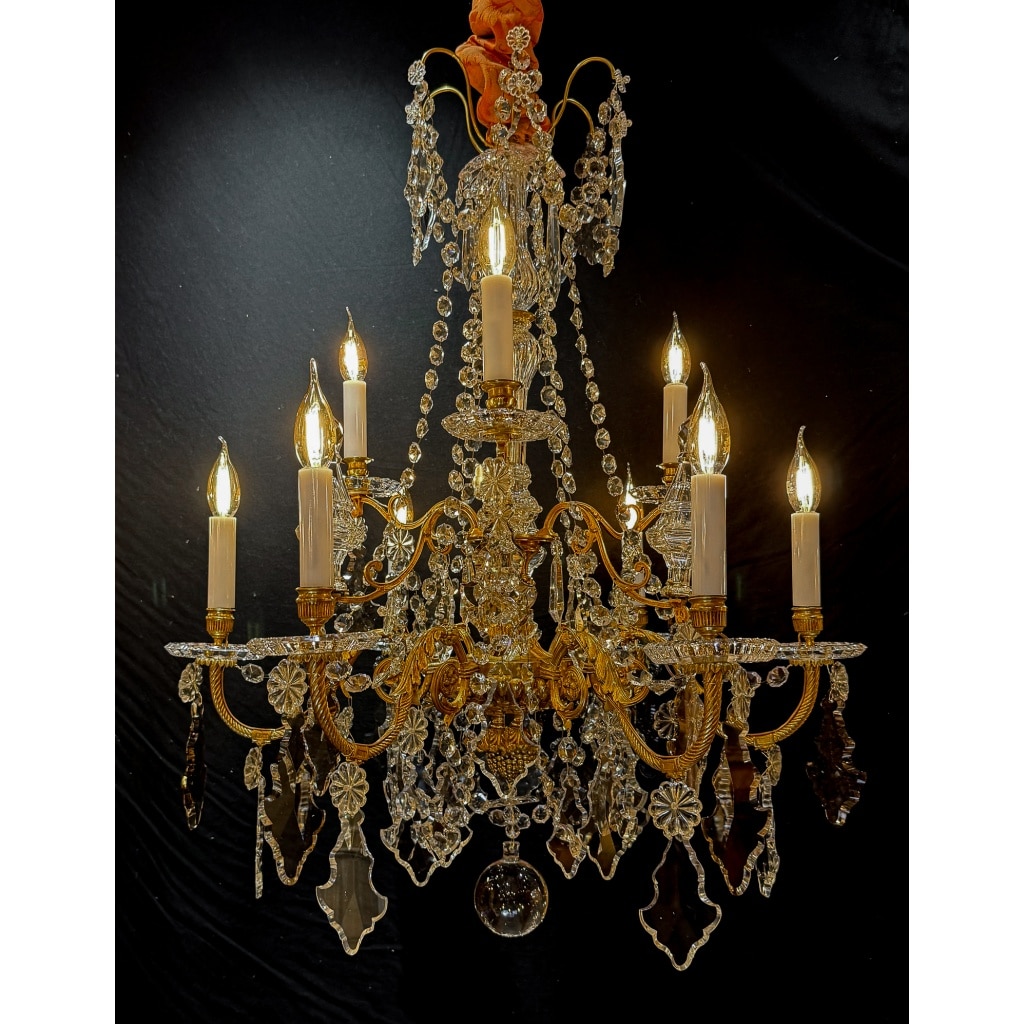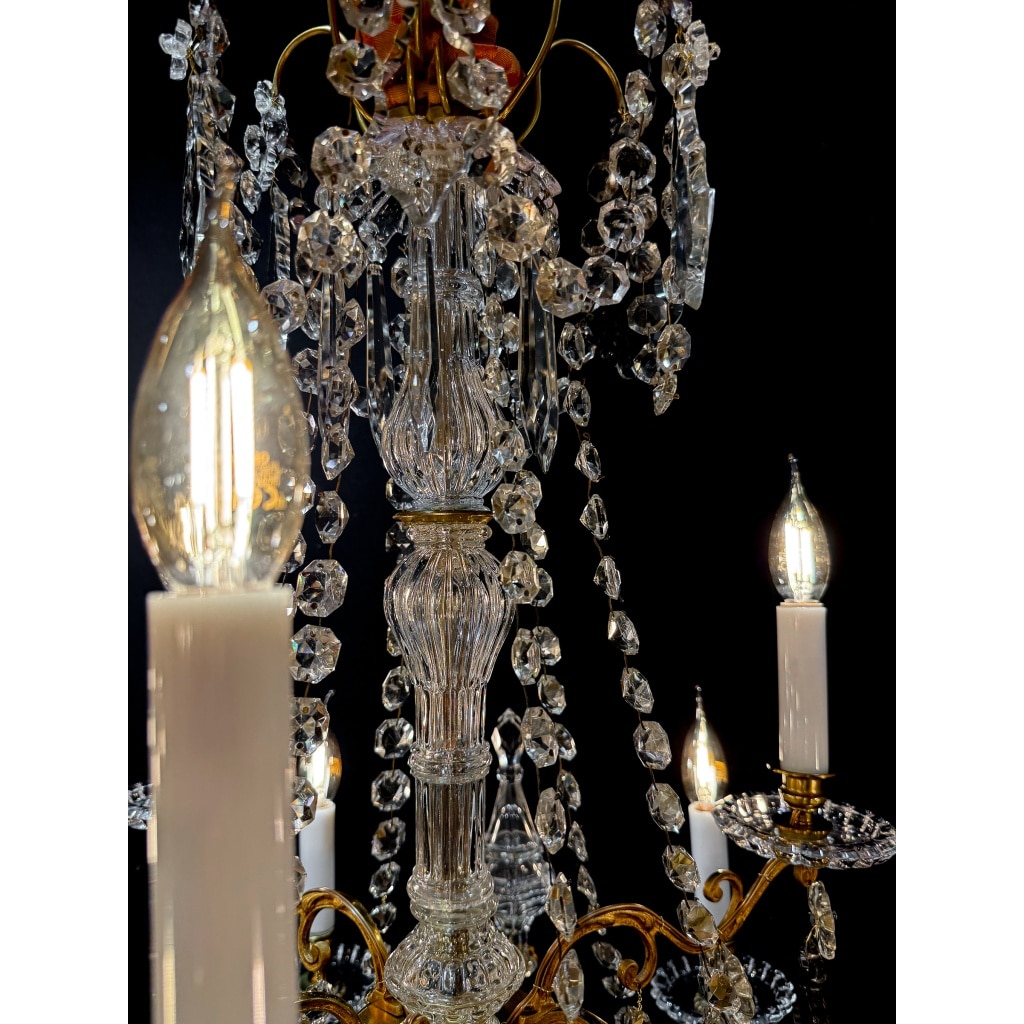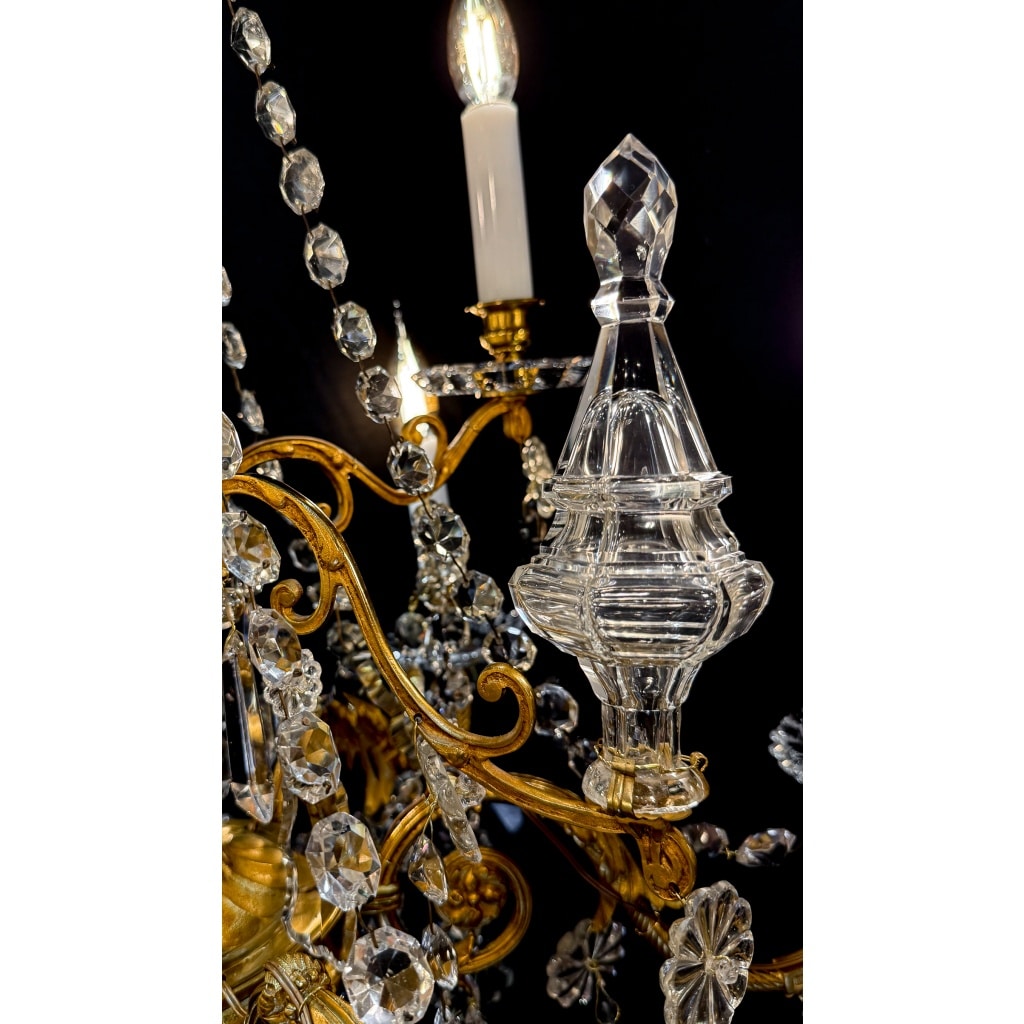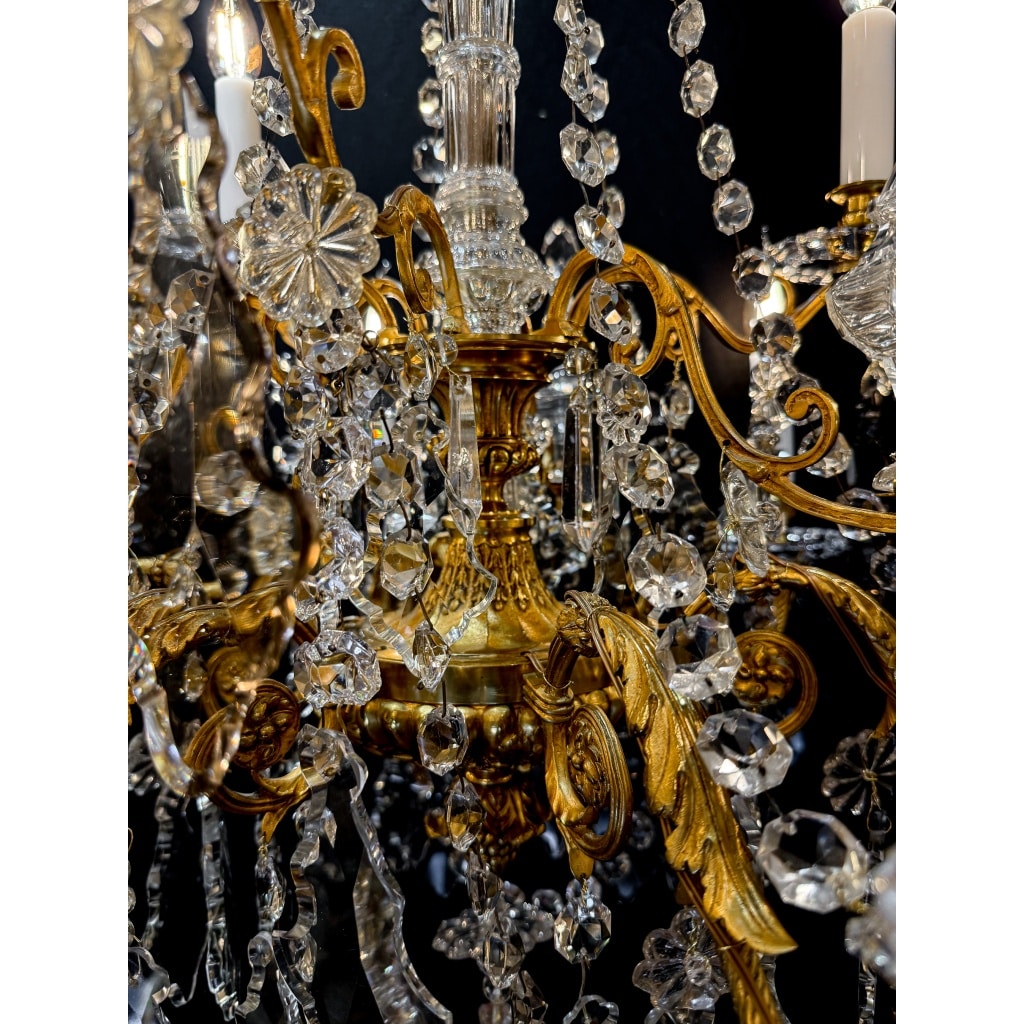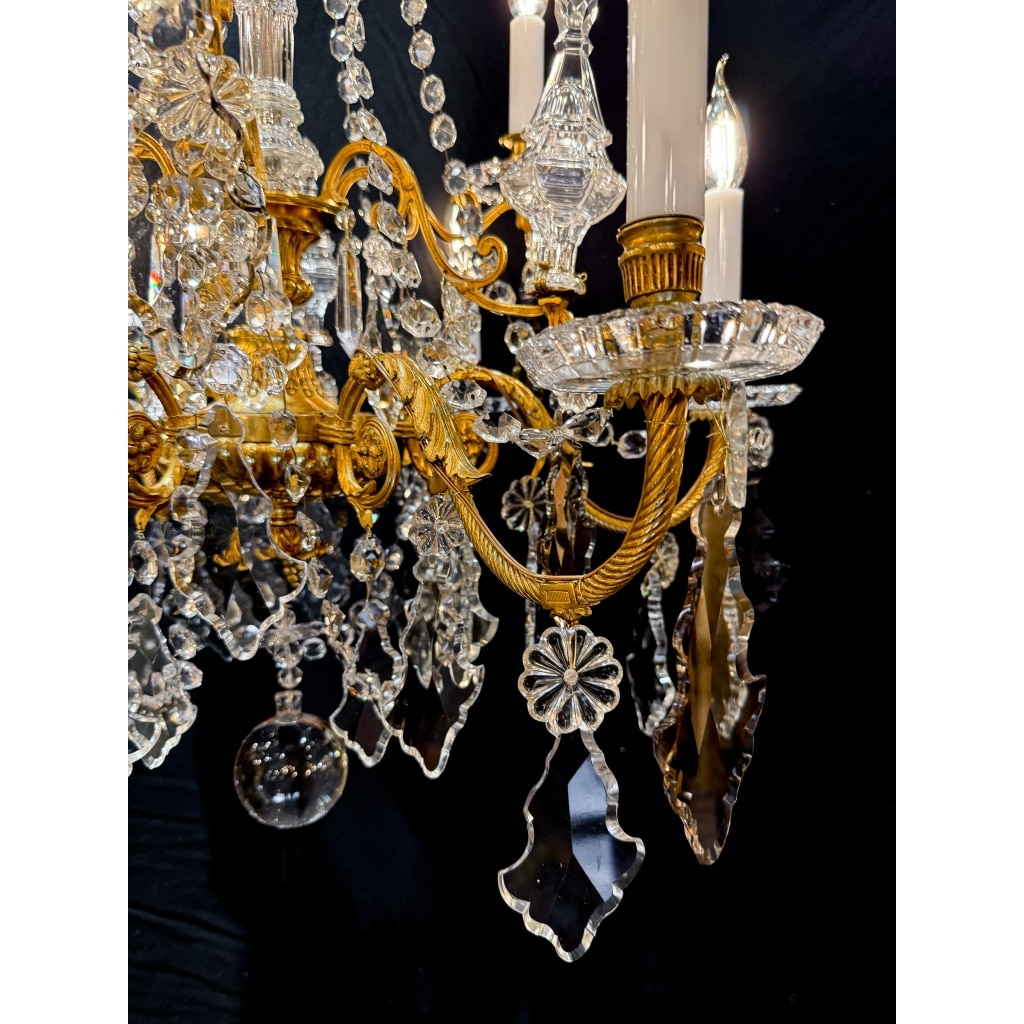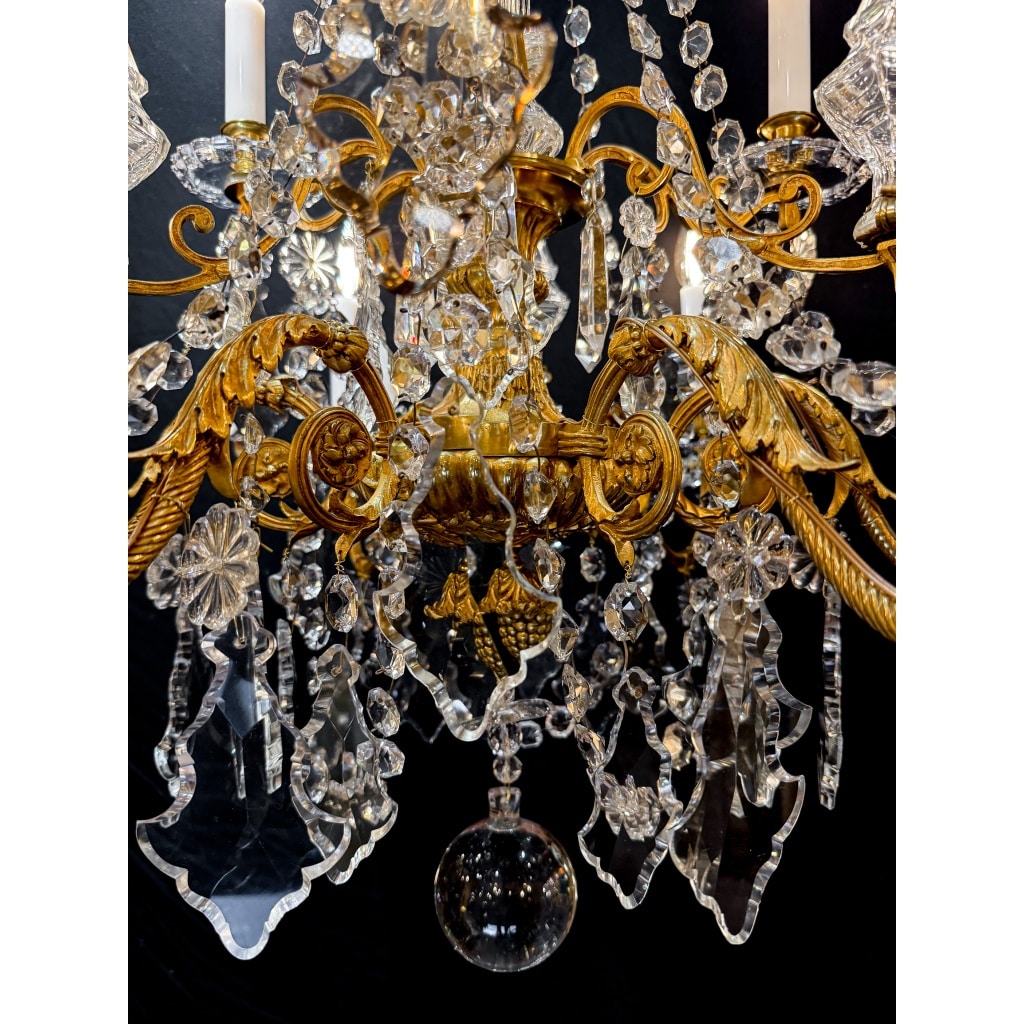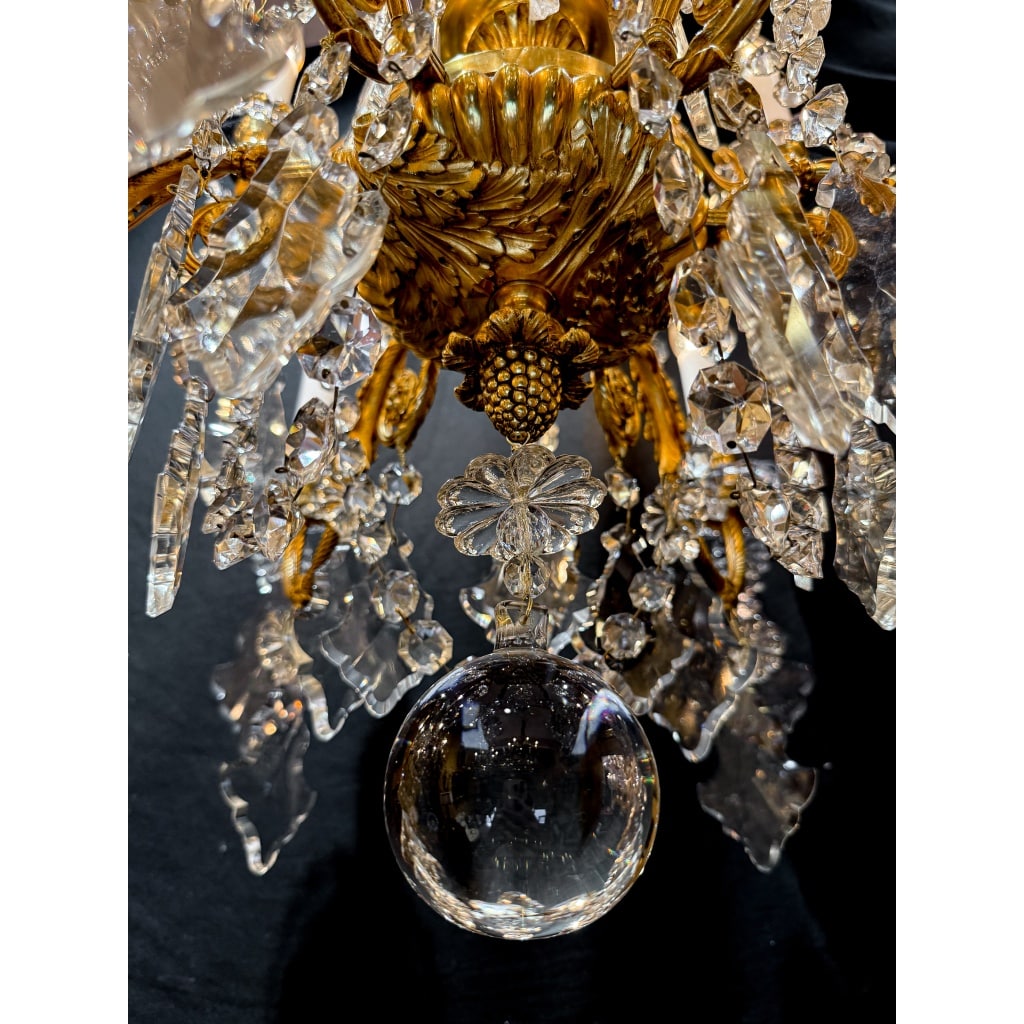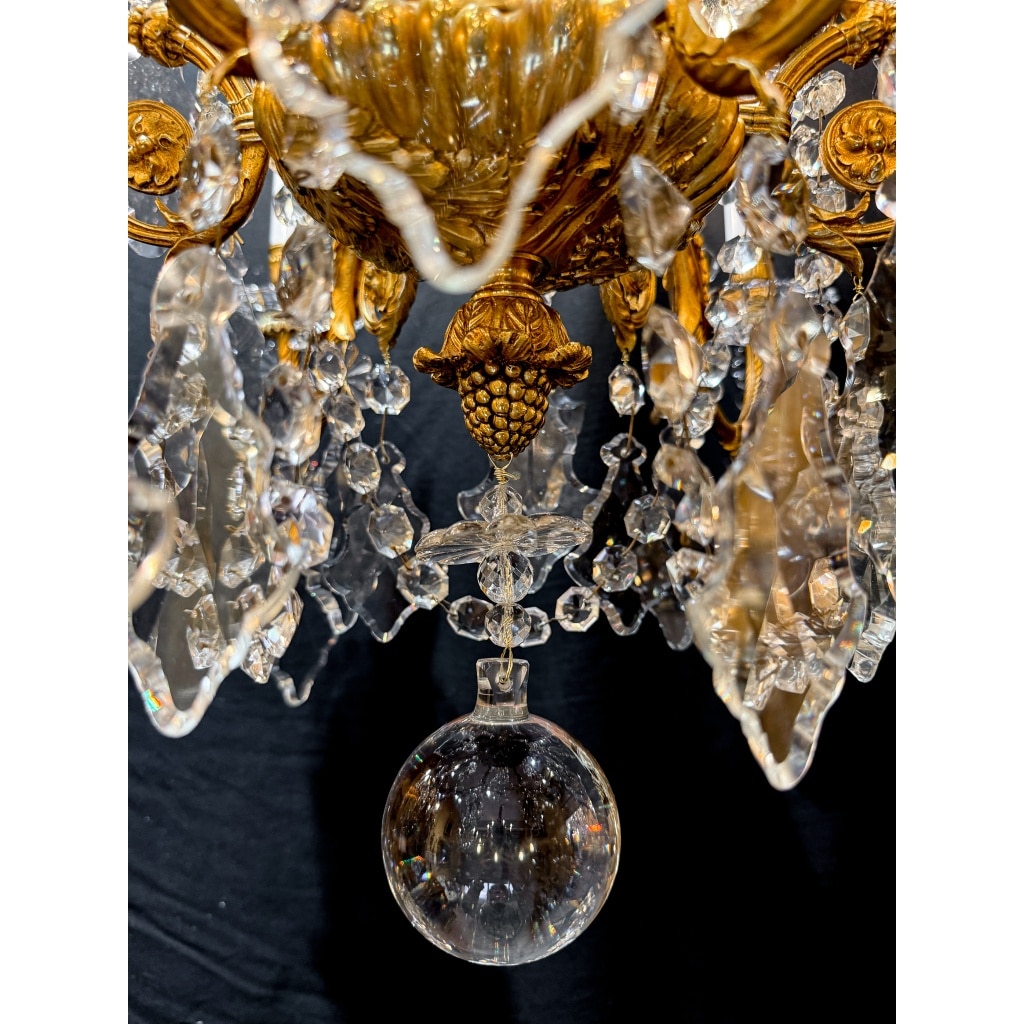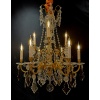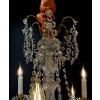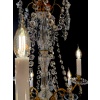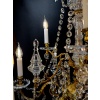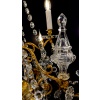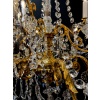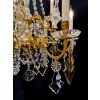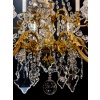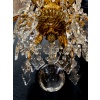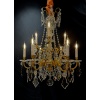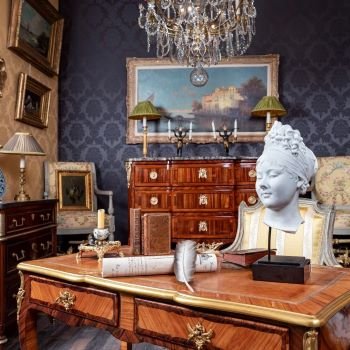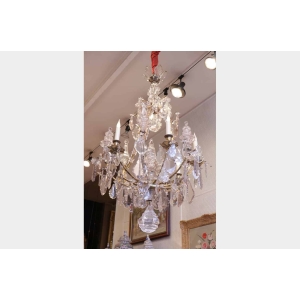Baccarat (signé) Lustre de style Louis XVI à Neuf Lumières en Bronze Ciselé et Doré vers 1900
Description :
Splendide lustre style Louis XVI en bronze ciselé et doré, orné d’un riche décor de cristal signé par la Maison Baccarat. Il éclaire par neuf bras de lumière torsadés avec des motifs de branchages et de feuilles, sur deux étages.
Caractéristiques :
Style : Louis XVI.
Matériaux : Bronze ciselé et doré, cristal Baccarat signé.
Époque : Vers 1900.
Décor : Cristal taillé, descentes d’octogones, grandes plaquettes, trois beaux poignards et superbes bassins.
Centre : Enfilage en cristal taillé.
Base : Grosse boule pleine en cristal.
Dimensions :
Hauteur : 100 cm.
Diamètre : 80 cm.
État :
En très bon état, dorure d’origine, électrification aux normes européennes. Possibilité de mise au standard américain sur demande.
Origine :
Magnifique lustre français d’époque Napoléon III, décor en cristal signé par la Cristallerie de Baccarat.
Histoire de Baccarat :
En 1764, le roi Louis XV accorde à Louis-Joseph de Montmorency-Laval, évêque de Metz, l’autorisation d’établir une verrerie dans le village de Baccarat en Lorraine.
En 1824, Ismaël Robinet, ouvrier verrier de Baccarat, invente une pompe à air pistonné qui facilite le soufflage du verre. L’année suivante, Baccarat développe la technique du pressé-moulé.
En 1855, Baccarat participe à la première Exposition universelle parisienne, avec notamment deux candélabres et un lustre de dimensions monumentales.
En 1860, le 29 octobre, Baccarat dépose sa marque de fabrique au tribunal de commerce de Paris : une carafe, un verre à pied et un gobelet inscrit dans un cercle. D’abord imprimée sur une étiquette en papier, l’estampille sera ensuite directement gravée sur la pièce.
Baccarat est un cristal d’une excellente qualité, il ne contient pas moins de 31,7% de plomb, sans aucun default, un haut niveau d’exigence, voici ce qui caractérise la manufacture. La Cristallerie de Baccarat traverse les générations tout en restant un symbole de l’art de vivre à la Française.
—
Baccarat (Signed) Louis XVI Style Nine-Light Chandelier in Chiseled and Gilded Bronze, circa 1900
Description:
A splendid Louis XVI style chandelier in chiseled and gilded bronze, adorned with a rich crystal décor signed by the House of Baccarat. It features nine twisted candle arms with branch and leaf motifs, arranged on two tiers.
Characteristics:
Style: Louis XVI
Materials: Chiseled and gilded bronze, signed Baccarat crystal
Period: Circa 1900
Decor: Cut crystal, octagonal drops, large plaques, three elegant crystal daggers, and exquisite basins
Center: Cut crystal beading
Base: Large solid crystal ball
Dimensions:
Height: 39.4 in
Diameter: 31.5 in
Condition:
In excellent condition, with original gilding and wiring compliant with European standards. Adaptation to American standards available upon request.
Origin:
A magnificent French chandelier from the Napoléon III era, featuring signed crystal décor by the Baccarat Crystal Works.
History of Baccarat:
In 1764, King Louis XV granted Louis-Joseph de Montmorency-Laval, Bishop of Metz, permission to establish a glassworks in the village of Baccarat in Lorraine.
In 1824, Ismaël Robinet, a glassworker from Baccarat, invented a piston-driven air pump that facilitated glass blowing. The following year, Baccarat developed the pressed-molded technique.
In 1855, Baccarat participated in the first Paris World’s Fair, showcasing two candelabras and a monumental chandelier.
On October 29, 1860, Baccarat registered its trademark at the Paris Commercial Court: a carafe, a stemmed glass, and a goblet inscribed in a circle. Initially printed on a paper label, the hallmark was later engraved directly onto the piece.
Baccarat crystal is of excellent quality, containing no less than 31.7% lead, with no defects, and a high level of craftsmanship. The Baccarat Crystal Works spans generations while remaining a symbol of French art de vivre.

